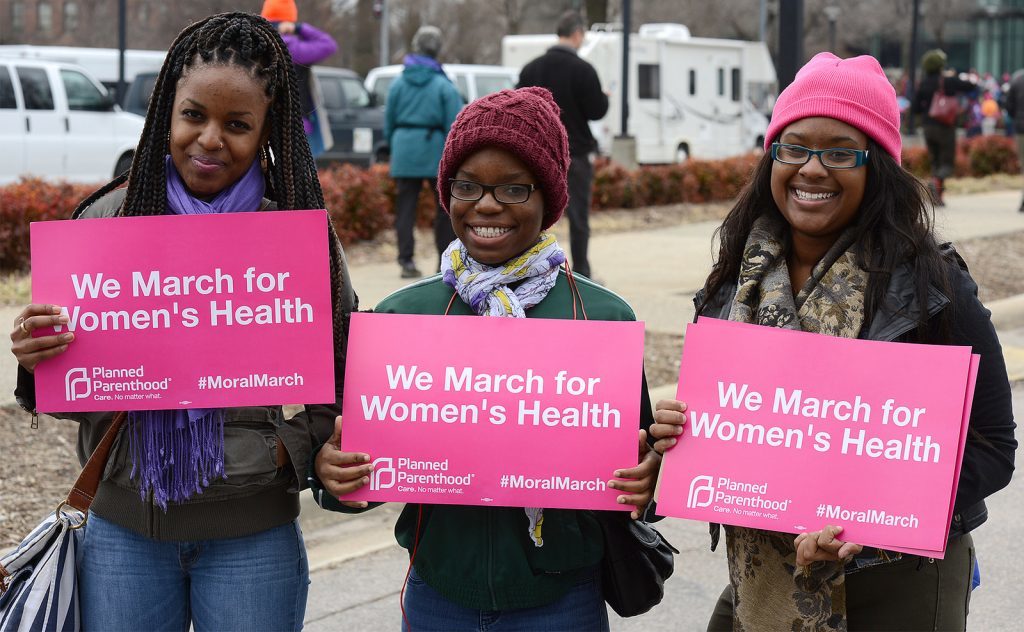“Thank God we got the baby out.” The voice of the Egyptian attending OB/GYN, my instructor during my own residency training, echoed in my head as I began to push through my second stage of labor a few weeks ago.
As I watched the initial decline in my baby’s fetal heart tracing, I thought about how a seemingly low-risk pregnancy could change rapidly. With heart rate decelerations comes the fear of decreased oxygenation to the baby, with a resultant negative impact on the health and well-being of the baby. And as I made my final vigorous push to get my baby out, I thanked God.
It’s a miraculous feeling when things go as planned in childbirth, and mothers and babies both experience successful outcomes. Unfortunately, this isn’t the feeling many pregnant women have during labor in the U.S.—the only developed nation in the world that has seen a steady increase in maternal mortality since 2000.
In my own practice as an OB/GYN, I have borne witness to this crisis—one that hits Black women particularly hard.

According to the Centers for Disease Control, U.S. maternal mortality rates for African American women are three to four times higher than those of white women, even when correcting for education and socioeconomic status. The most preventable causes they identified included hemorrhage in the postpartum period, thromboembolic events or blood clotting in the lungs or legs and pregnancy related blood pressure disorders or preeclampsia.
Many task forces and organizations are diligently working to change this. In December 2018, the House and Senate both unanimously passed the Preventing Maternal Deaths Act, which would provide federal funding in each state to further investigate this alarming trend and what can be done to prevent through maternal mortality review committees.
But even as many hospitals in different states mandate additional training in postpartum hemorrhage and preeclampsia drills through simulation to diminish rates, the racial disparities in maternal mortality rates will require more than on-the-job training to eradicate.
The recent blackface scandal involving Virginia Governor Ralph Northam, who was exposed for having racist images in his medical school yearbook page, is an example of racist undertones that exist for many medical students and doctors in training that may impact healthcare delivery. For Black women, this political cause is as personal as ever.
The “father of modern gynecology,” James Marion Sims, is known for modernizing much of the field in the mid-1800’s—but he did so by experimenting on African slaves and poor Irish immigrants, and without using anesthesia. The common belief at the time that African women did not experience pain made it easy for doctors like Sims to dehumanize these patients—and even though, in the centuries since, we have seen a growing awareness of the horrors of medical sexism and racism in years past, we’re still reckoning with the reverberating impacts today.
A 2001 series from the Institute of Medicine found that there are still “quality chasms” in healthcare for marginalized communities across the U.S., due in part to a lack of cultural competence by many providers and a lack of education and understanding of certain underserved and under-represented groups. Women of color remain historically under-treated for pain in an outpatient and inpatient settings. Black infants are currently twice as likely to die than their white infant counterparts.
Institutional and structural racism doesn’t just impact healthcare provider responses—it can shape a patient’s actual health status. Public health researcher at the University of Michigan, Arline Geronimus, has even hypothesized that “weathering” can occur for all women of color—the process where accumulated stress from a lifetime of confronting racism and sexism leads to susceptibility to different health vulnerabilities and chronic medical conditions. Her research also demonstrates the possibility of premature aging at the molecular level with chromosomes of Black women aging at an accelerated level.
A few weeks before my own maternity leave, I spent an hour with an African American patient who had a long history of sexual and pelvic pain. In an attempt to appropriately diagnose her, we reviewed encounters of many physicians who had dismissed her pain—many of them told her to “use more lube” for her sexual pain, or said her pain was “in her head.” She was in tears at the end of our discussion, because for the first time in six years, she had finally felt heard and taken seriously.
The first step to closing race-based gaps in health care and health outcomes is to listen to patients equitably. Building awareness of the disparities Black women face in pregnancy is a start—but providers also need to acknowledge our own biases. We need to understand the socio-cultural conditions that may lead to a patient’s poor health and understand our own stereotypes shaping their evaluations. Health care systems and facilities can accelerate this transformation by providing more time for physician-patient encounters and mandating cultural bias awareness and training for all providers.
We should always be thankful when things go well at the doctor’s office and in the hospital. But providing high-quality care devoid of biases isn’t something patients should pray for. It’s something we should all demand.





